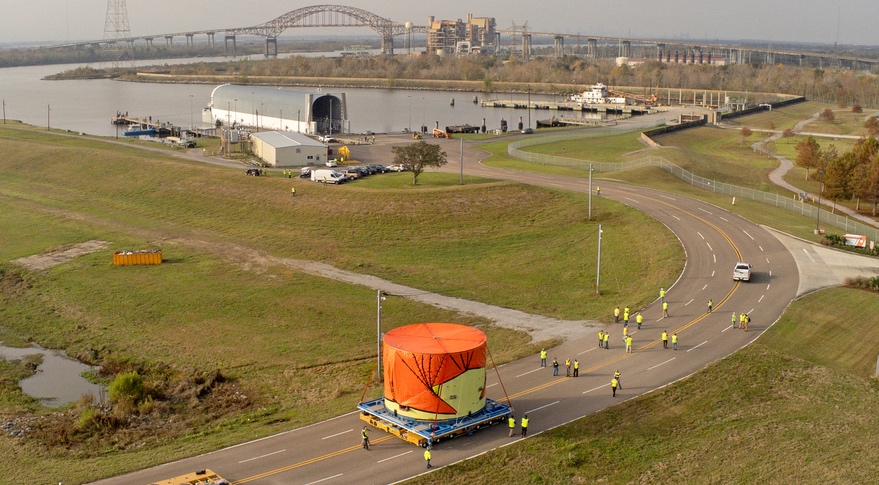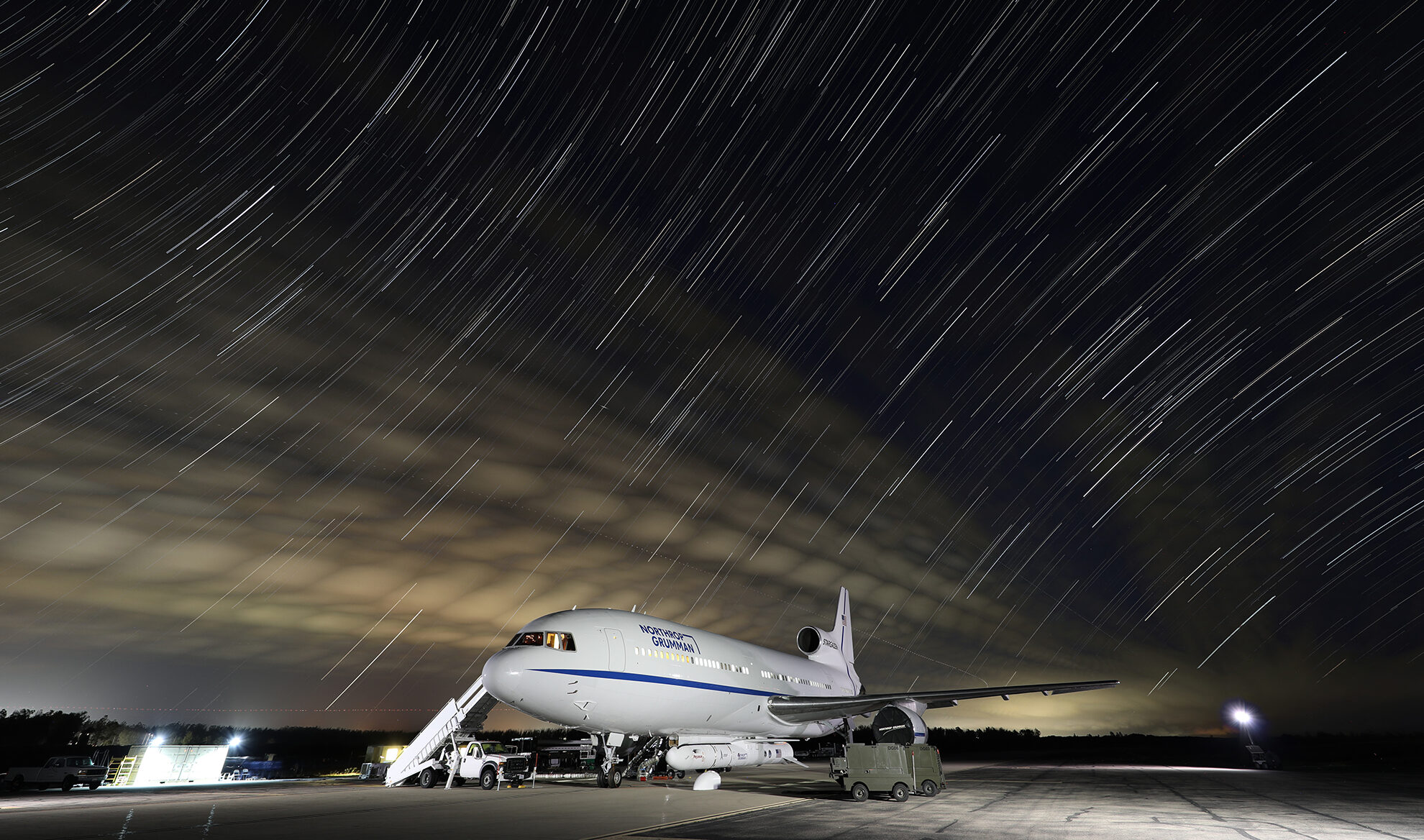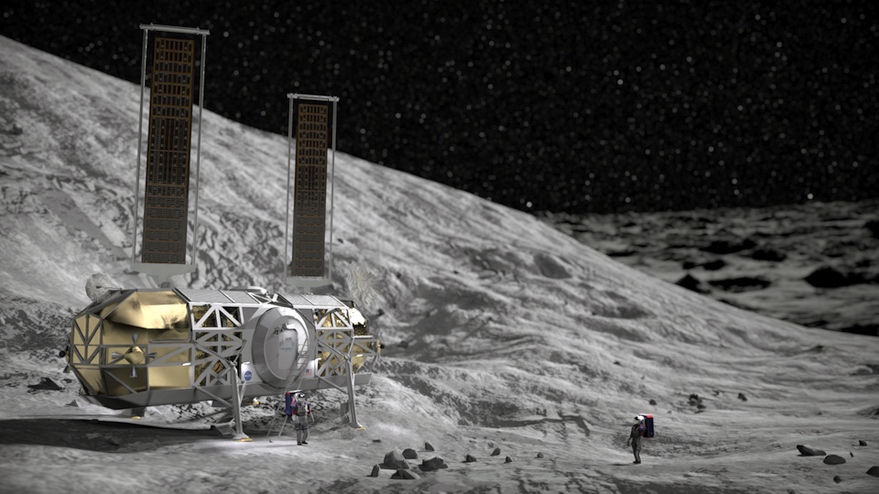Defense Innovation Unit seeks commercial options to deploy satellites in deep space
Original Publication Date: 2022-12-07 23:51

Defense Innovation Unit seeks commercial services to deploy and operate payloads. Area known as cislunar space begins at geosynchronous Earth orbit and extends out. U.S. Military leaders have warned that growing activity could turn this region into a contested domain. Proposals are due Dec. 21.
NASA and Boeing change SLS core stage assembly process
Original Publication Date: 2022-12-07 23:26

NASA and Boeing are changing how they assemble the core stage of the Space Launch System. Some of the final integration work will be moved to the Kennedy Space Center. The change is intended to free up space at Michoud for additional SLS work. The engine section will still be manufactured at Michoud but shipped separately.
Cryogenics specialist orders first satellite for detecting methane leaks
Original Publication Date: 2022-12-07 22:05

French cryogenic technology provider Absolut Group orders demo nanosatellite. 16U satellite would use sensors at very low temperatures to detect greenhouse gas leaks. Absolut Sensing aims to miniaturize cryogenic hardware its parent group has provided. A launch provider has not yet been selected for the satellite.
NDAA compromise bill wants more focus on satellite protection, responsive launch
Original Publication Date: 2022-12-07 21:17

Bipartisan compromise version of the 2023 National Defense Authorization Act released. Bill directs DoD to figure out a strategy to protect military satellites from threats in orbit. Senate leaders said they plan to take up the NDAA some time next week. Bill does not authorize a Space National Guard as a reserve component of the Space Force.
Blue Origin and Dynetics bidding on second Artemis lunar lander
Original Publication Date: 2022-12-07 17:43

Blue Origin and Dynetics have submitted proposals for a NASA competition to select a second lander. The competition is to fund development of a lander capable of transporting astronauts to the lunar surface. Blue Origin did not disclose details about its proposed lander or the roles its partners would play. No other companies have yet announced submitting SLD bids.
NASASpaceFlight.com
India launches a new ocean monitoring satellite on Saturday morning. The PSLV rocket delivered the EOS-06 spacecraft into a low Earth orbit. The mission, PSLV C54, lifted off from the Satish Dhawan Space Centre at 11:56 local time (06:26 UTC)
Commercial Archives
Blue Origin has quietly been making progress on its orbital New Glenn vehicle, evident by new hardware and test sightings. This progress has been made alongside the ongoing investigation into an in-flight abort of the fourth suborbital New Shepard mission of the year, which continues to keep that program grounded.
International Archives
A Russian Soyuz-2.1b rocket was launched from Site 43/4 at the Plesetsk Cosmodrome on Dec. 1. Onboard was likely a Lotos-S electronic intelligence satellite for the Russian military. There is a possibility that additional payloads are to be deployed by the primary satellite later.
ISS Updates – Spaceflight101 – International Space Station

A veteran NASA spacewalker and an EVA rookie from Japan ended their week with nearly six hours of work outside the International Space Station. The restoration of the Station’s Mobile Servicing System started last year and continued in January to provide Canadarm2 with a new pair of grappling hands.
Featured – Spaceflight101

SpaceX Falcon 9 takes to the skies over Florida’s Cape Canaveral Monday afternoon. The flight-proven Dragon spacecraft will deliver science gear, supplies and maintenance hardware to the International Space Station. It will be the first of at least six cargo ships inbound to the U.S. Segment of ISS this year.
News – Spaceflight101

Europe's Copernicus satellite fleet is gearing up for the arrival of its next addition on Wednesday. A Russian Rockot booster is set to blast off from the Plesetsk Cosmodrome at 17:57 UTC with the Sentinel-3B multi-function satellite.
Re-Entry: Long March 11 Rocket Body – Spaceflight101

The CZ-11 fourth stage used leftover propellant for a partial de-orbit maneuver, lowering its perigee to 120 Kilometers to significantly accelerate its orbital decay. It is reportedly built around a YF-50 main engine and in a nominal mission conducts the orbital circularization.
NASA’s Perseverance Rover Gets the Dirt on Mars

NASA’s Perseverance rover snagged two new samples from the Martian surface on Dec. 2 and 6. One of these two samples will be considered for deposit on the Martian surface sometime this month. Scientists want to study Martian samples with powerful lab equipment on Earth to search for signs of ancient microbial life.
NASA Sets Coverage for SWOT Water Survey Mission Launch

NASA will provide coverage of the upcoming prelaunch and launch activities for the international Surface Water and Ocean Topography (SWOT) mission. Live launch coverage will begin at 6 a.m. EST (3 a.m. PST) on NASA Television, YouTube, Twitter, the NASA app, and the agency’s website. SWOT will survey nearly all water on Earth’s surface for the first time, measuring the height of the world’s oceans, rivers and lakes.
NASA Is Testing a New Robotic Arm That Really Knows How to Chill Out

The COLDArm system uses gears made of bulk metallic glass. These gears require no lubrication or heating to function in the cold. A sensor embedded in COLDArm’s “wrist’ gives the arm feedback, allowing it to “feel” what it’s doing in all directions.
VP Harris, French President Get First Look at Galactic Get-Together

A merging galaxy pair cavort in this image captured by the James Webb Space Telescope. II ZW 96 is roughly 500 million light-years from Earth and lies in the constellation Delphinus. As well as the wild swirl of the merging galaxies, a menagerie of background galaxies are dotted throughout the image.
Baby Star ‘Burps’ Tell Tales of Frantic Feeding, NASA Data Shows

Newborn stars “feed” at a furious rate and grow through surprisingly frequent feeding frenzies. Outbursts from stellar babies at the earliest stage of development occur roughly every 400 years. The first such outburst was detected nearly a century ago, and they’ve rarely been seen since.
NASA’s Lunar Flashlight SmallSat Readies for Launch

Lunar Flashlight will be the first interplanetary spacecraft to use a new kind of ‘green’ propellant. The propellant was successfully tested on a previous NASA technology demonstration mission in Earth orbit. The science data collected by Lunar Flashlight will be compared with observations made by other lunar missions.
NASA’s Europa Clipper Gets Its Wheels for Traveling in Deep Space

The Europa Clipper mission is expected to launch in October 2024. The mission will explore the icy moon of Europa. Europa Clipper is not a life-detection mission, it will conduct a detailed exploration of Europa and investigate whether the icy moon, with its subsurface ocean, has the capability to support life.
